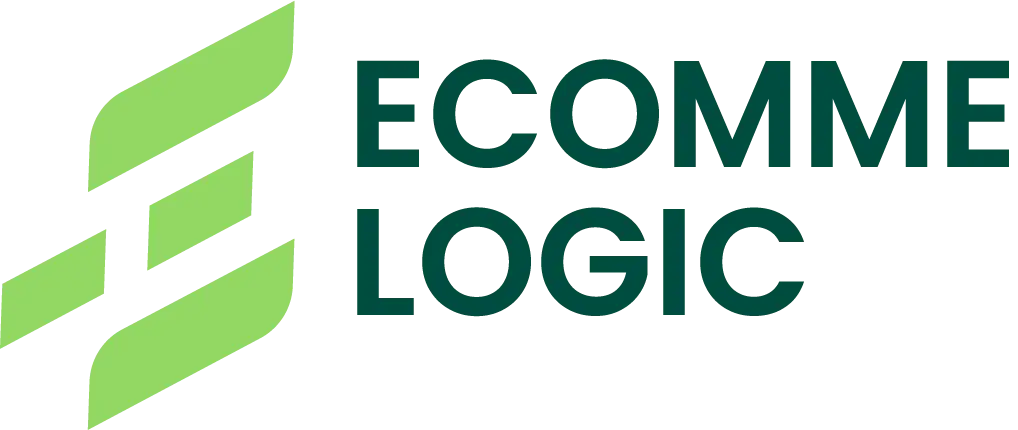Launching an e-commerce website is an exciting milestone—but it’s only the beginning. As your customer base grows and product lines expand, the real challenge lies in building a platform that can keep up with your growth. Scalability isn’t just about handling more traffic—it’s about delivering a consistent, high-performance user experience no matter how big your store becomes.
At EcommeLogic, we help businesses build smart, scalable structures that grow with them. If you’re wondering how to build a website that can handle your ambitions, here’s what you need to know.

Start with the Right Foundation
Scalability starts at the foundation—your tech stack. Choosing the right combination of tools and technologies is one of the most critical decisions you’ll make. From the front end to the database, every layer of your system should be built with performance and flexibility in mind.
- Front-end development: Frameworks like React.js or Next.js offer the responsiveness and speed that today’s users expect.
- Back-end development: Node.js or Laravel can handle dynamic requests and support complex logic while maintaining fast load times.
- Database: Scalable solutions like PostgreSQL or MongoDB efficiently manage growing amounts of data.
What’s important here isn’t just the individual components, but how well they work together. A tightly integrated, high-performing tech stack is the backbone of a scalable e-commerce experience.
Think Modular, Not Monolithic
One of the biggest mistakes businesses make early on is locking themselves into a monolithic architecture. It may seem faster to build everything in one place, but as your needs evolve, monolithic systems become inflexible and difficult to scale.
Instead, modular architecture—or microservices—divides your platform into smaller, independent components. Think of your store’s checkout system, search functionality, or product catalog as separate services. This setup allows you to scale specific parts of your website as needed without overhauling the entire system. If traffic spikes during a seasonal sale, you can allocate more resources to your checkout and inventory services without affecting everything else.
Prioritize Speed and Performance
Nobody likes waiting for a page to load—especially online shoppers. According to research, even a one-second delay in load time can reduce conversions significantly. That’s why performance optimization is key to scalability.
- Content Delivery Network (CDN): Distributes assets like images and videos across multiple servers worldwide, reducing latency.
- Lazy loading: Ensures content loads only when needed, keeping pages lean and fast.
- Back-end optimizations: Efficient database queries, well-structured indexes, and server-side caching contribute to smoother performance during peak hours.
The faster your website, the more users you retain—and the more scalable your business becomes.

Use Scalable Hosting and Infrastructure
Your hosting environment should be as adaptable as your business. Traditional shared hosting might work for a small store, but it won’t cut it when your site attracts thousands of users daily.
Cloud-based infrastructure—like Amazon Web Services (AWS), Google Cloud, or DigitalOcean—offers:
- Auto-scaling (resources adjust based on demand)
- Load balancing (distributes traffic efficiently)
- High availability (minimizes downtime)
This ensures performance remains optimal without overspending.
Future-Proof with Headless Commerce
As e-commerce evolves, headless commerce has emerged as a powerful solution for scalability. By decoupling the front end (what users see) from the back end (business logic), headless architecture allows content delivery across multiple channels—web, mobile apps, social media, and more.
Platforms like Shopify Plus or Contentful provide APIs that enable personalized, lightning-fast experiences across all digital touchpoints. This setup not only supports scale but also gives creative freedom to adapt storefronts without technical limitations.
Don’t Neglect Security
Scalability also means preparing for increased exposure to cyber threats. As your e-commerce site grows, so does the potential for attacks. Key security measures include:
- Secure payment processing
- Data encryption
- Regular software updates
- SSL certificates & firewalls
- Third-party security tools like Cloudflare
A scalable website isn’t just fast and functional—it’s secure and reliable.
Leverage Analytics for Smarter Growth
To build a scalable business, you need to know what’s working—and what isn’t. Data is your best ally here. Tools like:
- Google Analytics (user behavior)
- Hotjar (UX insights)
- New Relic (performance monitoring)
…help identify optimization opportunities, whether in checkout flows, payment methods, or infrastructure scaling before major campaigns.

Final Thoughts
Scalability isn’t something you “add on” later—it needs to be part of your e-commerce strategy from day one. With the right technology, architecture, and performance mindset, your store can grow without limits, delivering fast, secure, and seamless experiences for customers at any scale.
At EcommeLogic, we help e-commerce brands build smarter, stronger systems designed for long-term growth. Whether you’re starting fresh or future-proofing an existing website, our team is here to guide you every step of the way.
Ready to scale? Let’s build something big—together.

